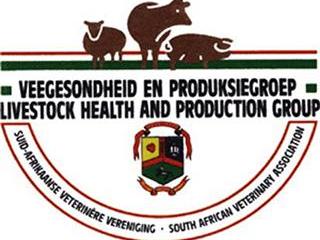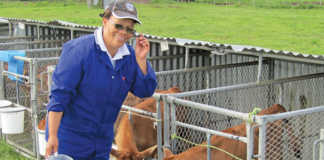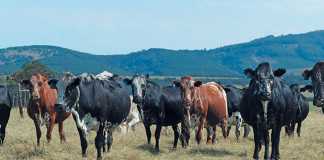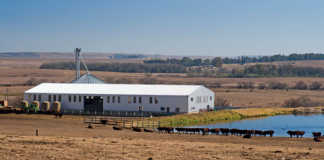
Next, do a survey of all roughage sources. Determine the amount of grazing available, how much hay can still be made, and which alternative sources are available. If possible, all available roughage should be harvested and stored. Bale all available wheat straw and unfertilised Eragrostis pastures even though this is an expensive exercise.
The making of silage from drought-stricken maize should be considered and the early buying in of winter licks should be done.
Contact your nutritionist so that a complete feed flow programme can be drawn up for your specific circumstances.
- Reports of internal parasite infestations were received from all over the country. It’s important to evaluate the efficacy of the anthelmintic given after each treatment, as resistance may exist. The best way to do this is to do a faecal egg count reduction test.
- If animals are going to be moved into vleis they should be treated with a drug containing triclabendazole to remove most of the liver flukes.
- Ticks are the carriers of many diseases, including African and Asiatic red water, anaplasmosis and heartwater. Certain ticks also secrete toxins which cause sweating sickness and Karoo paralysis. With colder temperatures approaching us in the near future be prepared for outbreaks of the latter. Hide damage and wounds caused by ticks with long mouth parts should be seen to as soon as possible. Consult your vet about tick control strategies.
Immature stages of multi-host ticks should be controlled in winter to prevent large adult tick numbers in summer.
Ask your vet to explain to you how to use long acting drugs, such as macrocyclic lactones and acaricide growth regulators, to control blue ticks, as the indiscriminate use of these may lead to blue ticks becoming resistant to them.
- Insect-transmitted diseases have been reported from many areas of the country. A lot of sheep have been infected with blue tongue and deaths were reported. However, these seem not to have been vaccinated according to instructions – that is, vaccine A, then, three weeks later, vaccine B and, after 3 weeks, Vaccine C. Lambs born in September weren’t vaccinated or were vaccinated too late.
- Lumpy skin disease was again reported from many areas due to animals not being vaccinated. Isolate diseased animals as the virus causing this disease can also spread from animal to animal.
- Clostridial diseases such as gas gangrene, pulpy kidney, red gut, blood gut, lamb dysentery and botulism were reported. All could have been prevented by a well-managed immunisation programme.
- Biosecurity measures on some farms are still not in place, as trichomonosis, vibriosis and brucellosis are reported every month. These diseases cause huge financial losses for farmers.
- The following viral diseases were reported: bovine malignant catarrh, bovine viral diarrhoea, enzootic bovine leukosis, warts, orf and rabies.
- Reports of copper poisoning and deficiencies of copper and selenium were received. It’s important for farmers to know the trace mineral status of the animals on their farm. This will enable them to establish which supplements are to be given so that optimal production can be achieved. Contact your veterinarian to assist you in taking the correct samples to send to a laboratory for analysis.
- Poisonings reported were: urea, Lantana, Senecio, Cestrum, prussic acid, photosensitization due to Lippia spp., ganskweek, geeldikkop, acidosis, sulphur, vermeersiekte, Cynanchum, Datura and fluoride.
Feedlot report
Cattle
- As the season is changing the occurrence of bovine respiratory disease increased. The very hot days and heat stress had a negative effect on the immunity of cattle. As the difference in day and night temperatures increased, the stress in animals increased which again led to an increase in disease incidence and mortality. A few cases of interstitial pneumonia occurred.
- Compared to last year, fewer cases of red water and anaplasmosis were reported.
- A few cases of Parafilaria were seen in cattle arriving from the northern parts of the country.
- Measles were seen sporadically and most of them were already calcified which indicated that cattle had already been infected when arriving at the feedlot.
- Ringworm is common in calves arriving at feedlots.
- Hoof problems occurred in wet kraals where dung could not be removed in time.
Sheep
- An increase in pneumonia was seen.
- Mortalities due to wireworm infestations in heavily infected sheep. Transport stress played a role in sheep dying.
- A few cases of blue tongue occurred.
- A Vitamin A deficiency was seen in sheep arriving from drought-stricken areas. Some of these sheep were blind and very weak.
- Orf occurred in most kraals.
- Pregnancy toxaemia occurred in heavily pregnant fat ewes that only had grass to eat with no additional supplements.
Map reports for February 2013













